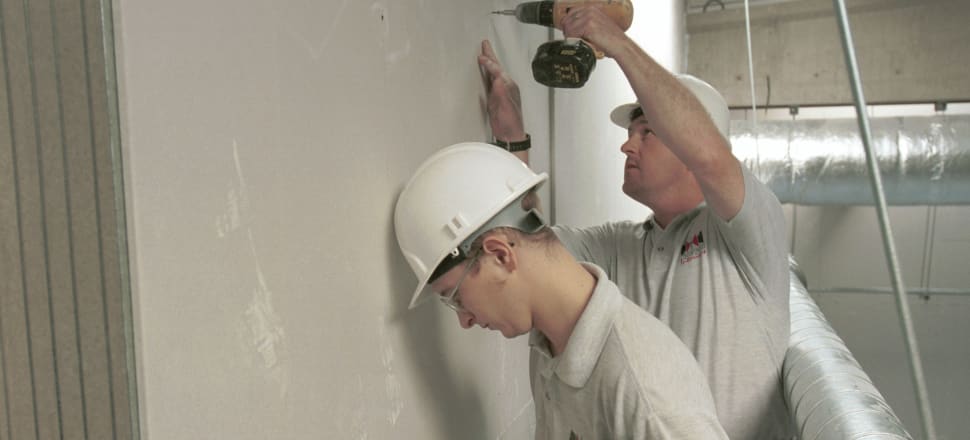
Nigel Isaacs looks back nearly 400 years for answers on the plasterboard shortage hobbling construction in New Zealand and around the world
Comment: It might not be entirely fair, but we could blame the French for the great plasterboard crisis of 2022.
Louis XIV of France, following the destruction brought by the 1666 Great Fire of London, decreed timber frames of houses had to be covered with nailed boards and plaster, “both inside and out, in such a way that they are able to withstand fire”.
Enter gypsum plaster – or to give it its chemical name, hydrated calcium sulphate.
With two molecules of water for each molecule of gypsum, it does a good job of resisting fire. Gypsum is often called ‘Plaster of Paris’ after the large deposits found at Montmartre in the French capital.
As well as fire protection, gypsum plaster provided a smooth, clean, paintable surface. Compared with timber sarking, it was reasonably airtight and kept out vermin, although it didn’t provide any structural benefit.
What was there not to like? The problem was the time for construction. The gypsum plaster coat was applied wet, so it took time to harden. This slowed the building process.
A solution eventually emerged in the form of fibrous plaster sheets that could be prefabricated and hardened off-site. They were made by adding animal hair or plant fibre to the gypsum to resist cracking.
The first hint of a rival to fibrous plaster appeared in 1883, when Augustine Sackett of New York patented a three-pile roofing paper - a continuous sandwich of paper, felt and paper cemented together, then cut to size. Sackett’s first plasterboard appeared in 1894. Improved by other inventors around the world, by 1920 modern plasterboard had arrived.
After the sarking years
Until the 1930s, the majority of New Zealand councils allowed an interior wall lining of sarking (thin timber boards) covered with hessian-scrim to which wallpaper was attached. It had a trifecta of failure: it was unsanitary, unhygienic and highly flammable.
Fibrous plaster and the new plasterboard offered a real improvement. Imported wallboards were available and, by the 1920s, local production was being encouraged.
It was out of this milieu that Gib board would rise.
In 1925, a new New Zealand company, Builders’ Composite Materials Limited, promoted its patented Vidite plaster wallboard as being water-proof, damp-proof, borer-proof, fire-resisting and good for nailing. This company only lasted two years before its plant was taken over by NZ Wallboards Ltd, the direct ancestor of Winstone Wallboards.
In 1932, the name became Gibraltar Board with the slogan “As Solid as the Rock of Gibraltar”. The company made wide use of ads promoting Gibraltar Board’s strength and fire resistance.
New benefits were advertised in 1938, including insulation against heat and cold, noise exclusion, and, where used to line walls and ceilings, providing bracing “three times stronger than weatherboards”. Since then, the product has continued to evolve.
Rewriting the rule book
At about the same time Gib board started rolling out the factory door, the country’s first national building bylaws were being developed.
Over subsequent decades, these bylaws went through various iterations – and became increasingly complex. They were largely prescriptive ‘do it this way’ rules, adjusted to suit local conditions and councils.
The introduction of the New Zealand Building Code in 1992 marked a significant departure. Instead of ‘do it this way’, the code says ‘achieve this performance’, requiring evidence the as-designed building will meet the national minimum performance requirements.
Where proof of performance is required by the building code, evidence must be provided – based on the properties of the actual materials and techniques – before building consent is issued.
Under the code, plasterboard may be specified for its structural, fire resistance, water resistance and/or sound control performance compliance, each of which may require test evidence of its suitable performance. It may also have non-regulation roles, such as providing a low-maintenance surface suitable for painting or wallpapering.
Once consent is issued, where a specific product, material or method is specified then it must be used – product substitution is generally not permitted, unless it can be shown to be appropriate through test results or other evidence. The Ministry of Business, Innovation and Employment has now published guidance on plasterboard product substitution.
Managing risk
Although today’s focus is on the use of one plasterboard product in short supply, the reality is the same situation could arise for any product used in a design to achieve building code compliance.
Louis XIV saw gypsum as a solution to a problem as a way to manage the risk of fire. But experience with the building code has made many involved in design and construction averse to any risk. The question remains whether the rules are still appropriately managing risk and still fit for purpose.
You might ask, why not just change the building design to avoid the use of a product in short supply? For example, if the specified plasterboard isn’t available, the structural bracing role can be replaced by plywood or other sheet material, as happens in other countries. This may result in extra material cost but can easily be carried out during the design process.
But it’s not so simple to make a change when the design is consented, or under construction. In the absence of products deemed to be equivalent, this may require redesign and re-consenting – both of which will have significant time and financial costs.
Unapproved substitution can lead to the building being refused a Code Compliance Certificate with consequential future legal problems for the owner (and potential purchaser) when the property is to be sold.
Is legal action the future?
The building code may be thought of as the ‘fence at the top of cliff’ with the legal system the ‘ambulance at the bottom’. This approach places great importance on the actions of the designer, builder and product supplier to ensure all requirements are implemented.
It also reduces freedom to substitute products specified for compliance with the code – and is why any substitution under it requires clear management of liability.
It will not be acceptable to future house purchasers to discover that due to a hurried substitution, even if “approved”, their building either does not comply or is failing due to some unforeseen omission.







